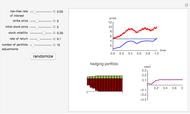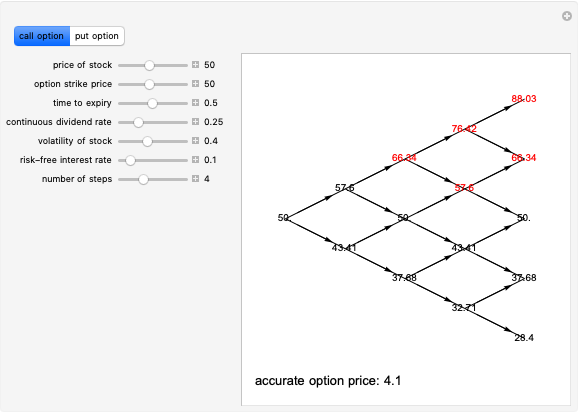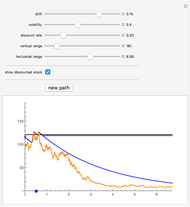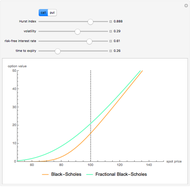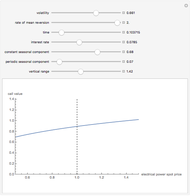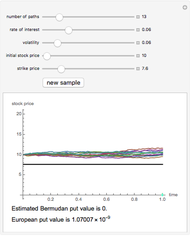Hedging the European Put Option

Requires a Wolfram Notebook System
Interact on desktop, mobile and cloud with the free Wolfram Player or other Wolfram Language products.
This Demonstration illustrates the so-called delta-hedging argument that is used to derive the Black–Scholes formula for the price of a European put option on stock in the Black–Scholes model. The sample path of a stock price following an exponential Brownian process is shown colored orange (mouse over a curve to display its description). The strike price is represented by the dashed black line. A portfolio is constructed consisting of one put option on the stock, an amount of stock (equal to -Δ, where Δ is the derivative of the Black–Scholes price of the option with respect to the stock price), and a money market account. The portfolio is adjusted at regular intervals (you choose the number of times) and the proceeds from the transactions (shown as points in the graph) are invested in the money market. The total value of the portfolio, which is the sum of the value of the option (green line), value of the stock held (blue line), and the money market account (magenta line) is almost deterministic. Zooming in on this brokerage account line (by using the two bottom sliders) reveals the presence of randomness, which can be eliminated by increasing the number of portfolio adjustments.
Contributed by: Andrzej Kozlowski (March 2011)
Open content licensed under CC BY-NC-SA
Snapshots
Details
There are two basic arguments involving delta-hedging that can be used to derive the Black–Scholes formula. One of them is used in the related Demonstration "Hedging the Black-Scholes Call Option". In that argument a self-financing portfolio is constructed that matches with probability 1 the value of the payoff of the option. In practice the portfolio is only approximately self-financing; to make it really so, infinitely many portfolio adjustments are needed. Here we construct a portfolio consisting of the option itself, stock, and a money market account, which makes the portfolio self-financing. However, again, infinitely many portfolio adjustments are needed to make the portfolio truly self-financing and "riskless". Assuming that the portfolio is self-financing and riskless, the principle of absence of arbitrage implies that it has to grow at the riskless interest rate. Writing this condition in differential form and using the Itô formula leads to the Black–Scholes equation.
This argument is given in incorrect form in many well-known books on option pricing—it ignores the money market account and incorrectly applies the Itô formula. This particular corrected version of the argument can be found in S. Stojanovic, Computational Financial Mathematics Using Mathematica, Boston: Birkhäuser, 2002, which also contains a Mathematica program implementing it (somewhat different from this Demonstration and written for an earlier version of Mathematica).
Permanent Citation
"Hedging the European Put Option"
http://demonstrations.wolfram.com/HedgingTheEuropeanPutOption/
Wolfram Demonstrations Project
Published: March 7 2011







